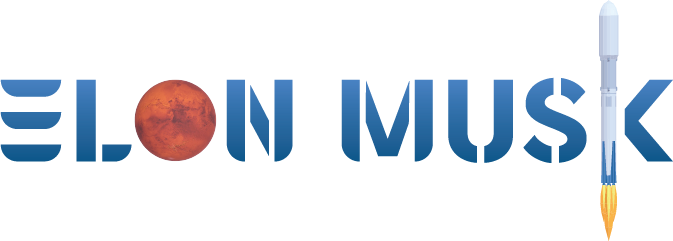
Tesla Quietly Phases Out Model S and X in Europe Amid Shifting Strategy
- by TechStory
- Jul 30, 2025
- 0 Comments
- 0 Likes Flag 0 Of 5

Linkedin
Tesla has quietly ended the sale of its Model S and Model X electric vehicles in Europe, signaling the slow retreat of two of its earliest and most iconic models. The automaker recently updated its European websites to remove the option to place new orders for either vehicle. Shoppers in the region are now limited to purchasing from existing inventory.
You might also like Best Currency Pairs for Day Trading (High Liquidity & Volatility)
This development is part of a broader scaling back that’s been unfolding over the last year. In 2023, Tesla stopped producing right-hand drive versions of the two models, effectively ending their availability in markets like the UK, Australia, and Japan. Earlier in 2024, the company also discontinued sales of the Model S and X in China—one of the world’s most competitive EV markets.
With Europe now removed from Tesla’s active markets for these vehicles, the Model S and X remain available primarily in the U.S. and Canada.
Once Game-Changers, Now Marginalized
Introduced more than a decade ago, the Model S and X helped put Tesla on the map. The Model S, launched in 2012, broke barriers with its performance, range, and sleek design, while the Model X, released in 2015, brought distinctive styling and luxury features to the electric SUV segment.
But the EV world has changed dramatically. Tesla’s attention has shifted toward its mass-market offerings—the Model 3 and Model Y—which have become its top-selling vehicles worldwide. These models, priced more affordably and manufactured at scale, now drive the vast majority of the company’s revenue.
That shift is also evident in Tesla’s reporting. While the Model 3 and Y are tracked as individual sales categories, the Model S and X have been lumped into a vague “Other Models” section in Tesla’s delivery reports, alongside the Cybertruck and the Semi. So far in 2024, just over 23,000 units from this “Other” category have been delivered, a figure that pales in comparison to the nearly 700,000 Model 3 and Y units shipped globally in the same period.
Small Updates, Higher Prices
In early 2024, Tesla introduced a few interior enhancements to the Model S and X, including multi-color ambient lighting and updated trim. But these updates were modest and did little to change the fundamental experience of driving or owning the vehicles.
At the same time, prices for both models increased, leading to frustration among prospective buyers. In a market where newer, more competitive luxury EVs are emerging, these small changes weren’t enough to attract serious interest or boost sales.
Without meaningful upgrades to performance, range, or software capabilities, the Model S and X have fallen behind not just external competitors but also newer offerings within Tesla’s own portfolio.
Strategy Shift or Quiet Sunset?
Tesla has not formally announced the end of Model S and X production, but industry observers believe the company is preparing to phase out both vehicles entirely. The end of new orders in Europe and China, combined with declining sales, points to a reduced strategic emphasis.
The fact that only North America remains as a major market for the models suggests that Tesla may be winding down production gradually rather than making a public exit. Limiting customer access to inventory-only vehicles, rather than new builds, is often a signal that a product is nearing its end of life.
For Tesla, which is increasingly focused on profitability, cost-efficiency, and scaling up operations, the continued investment required to sustain the S and X may no longer be justifiable.
Crowded EV Market Brings New Challenges
The luxury EV market is no longer Tesla’s uncontested playground. Automakers like BMW, Mercedes-Benz, Audi, and startups like Lucid Motors have entered the space with strong offerings. These new models often come equipped with cutting-edge features, modern interiors, and competitive pricing, making it harder for Tesla’s aging luxury duo to maintain appeal.
Adding to the pressure, Tesla has recently launched a three-row version of the Model Y in China, a move that could further cannibalize interest in the more expensive Model X. Buyers seeking space and performance may now opt for the Model Y, which offers similar practicality at a lower price point.
Meanwhile, the Model S faces stiff competition from both premium EV sedans and newer Tesla innovations. Without standout features or a significant technological edge, it increasingly feels like a vehicle from a past generation of EVs.
Legacy Models Lose Their Spotlight
As Tesla moves forward, the Model S and X are increasingly absent from its public messaging. Their diminished visibility in sales reports, lack of new global launches, and stagnant design suggest that they’re no longer central to Tesla’s product vision.
The company is now doubling down on its expansion efforts—building out Gigafactories, ramping up Cybertruck deliveries, and preparing for its next-generation, lower-cost EV platform. Tesla’s future is rooted in scalability and innovation, and that no longer seems to include the vehicles that once brought the company mainstream recognition.
While Elon Musk hasn’t addressed the fate of the Model S and X directly, his public statements and product focus have been overwhelmingly geared toward Tesla’s future vehicles and projects. These include advancements in autonomous driving, energy storage, and a fully self-driving robotaxi, rather than updates to its legacy fleet.
Tags:
Please first to comment
Related Post
Stay Connected
Tweets by elonmuskTo get the latest tweets please make sure you are logged in on X on this browser.
Sponsored
Popular Post
Sam Altman's OpenAI Takes On Elon Musk's Grok in AI Chess Tournament Final - Who Won?
28 ViewsAug 09 ,2025






 Energy
Energy

















